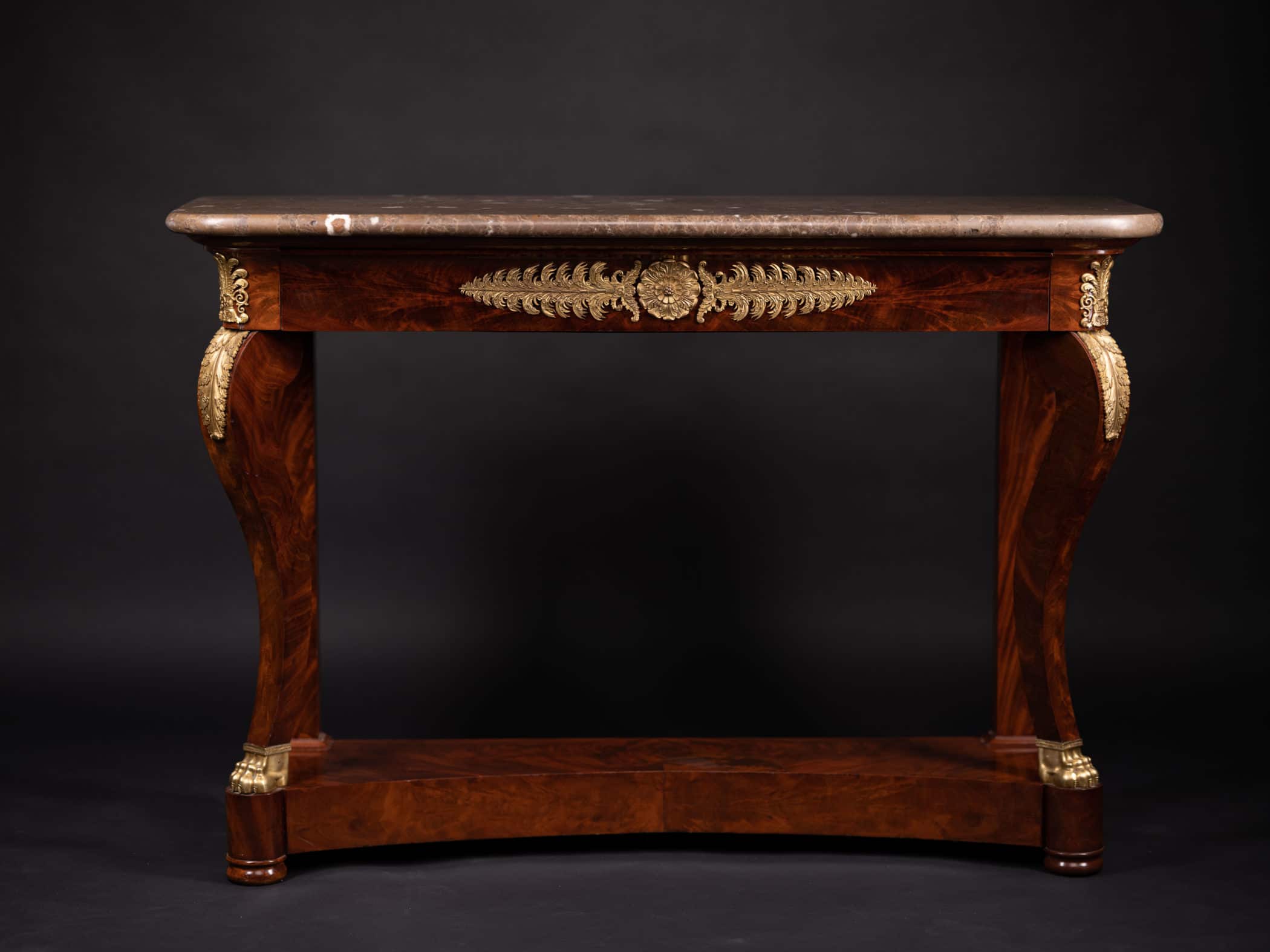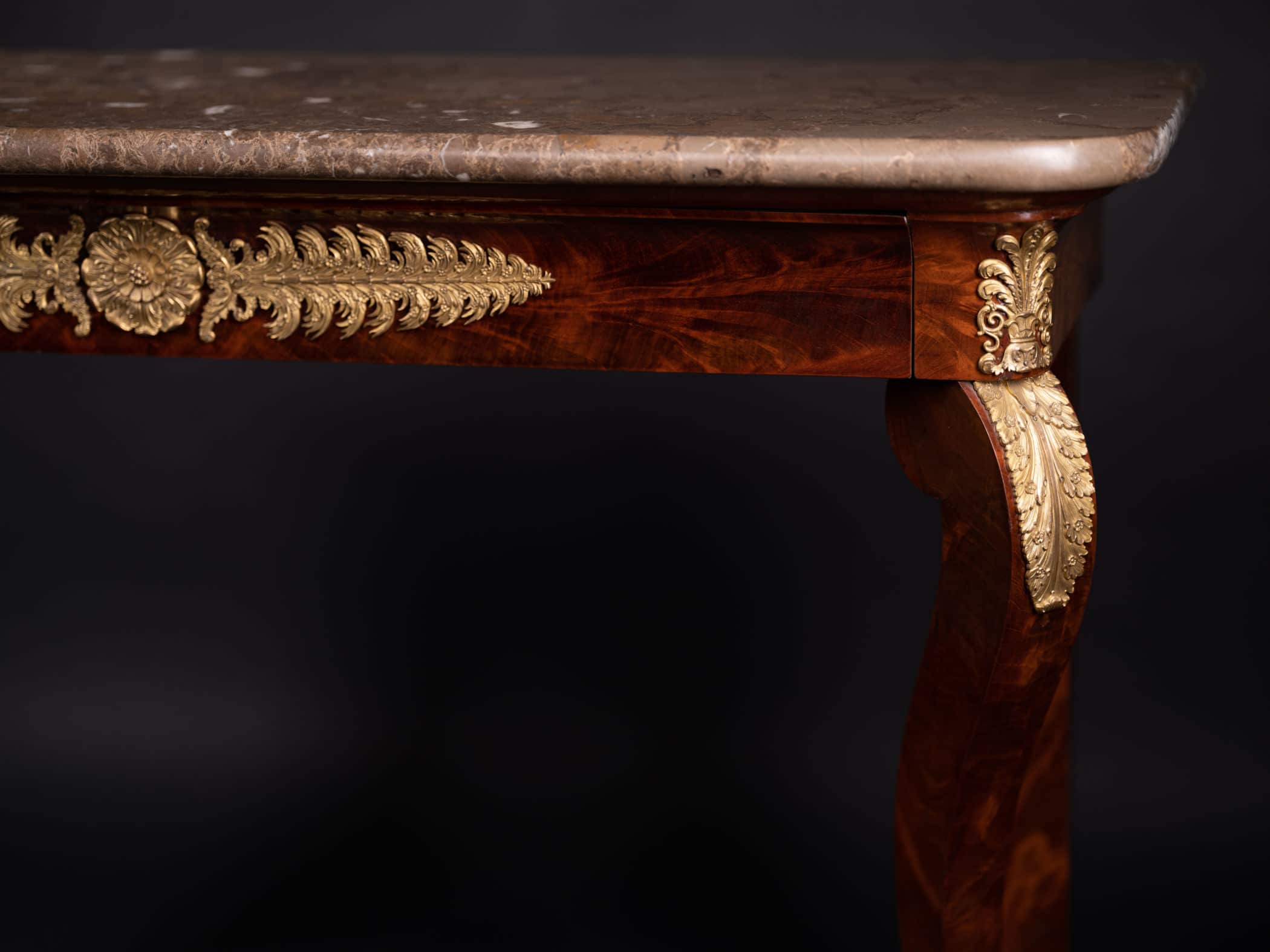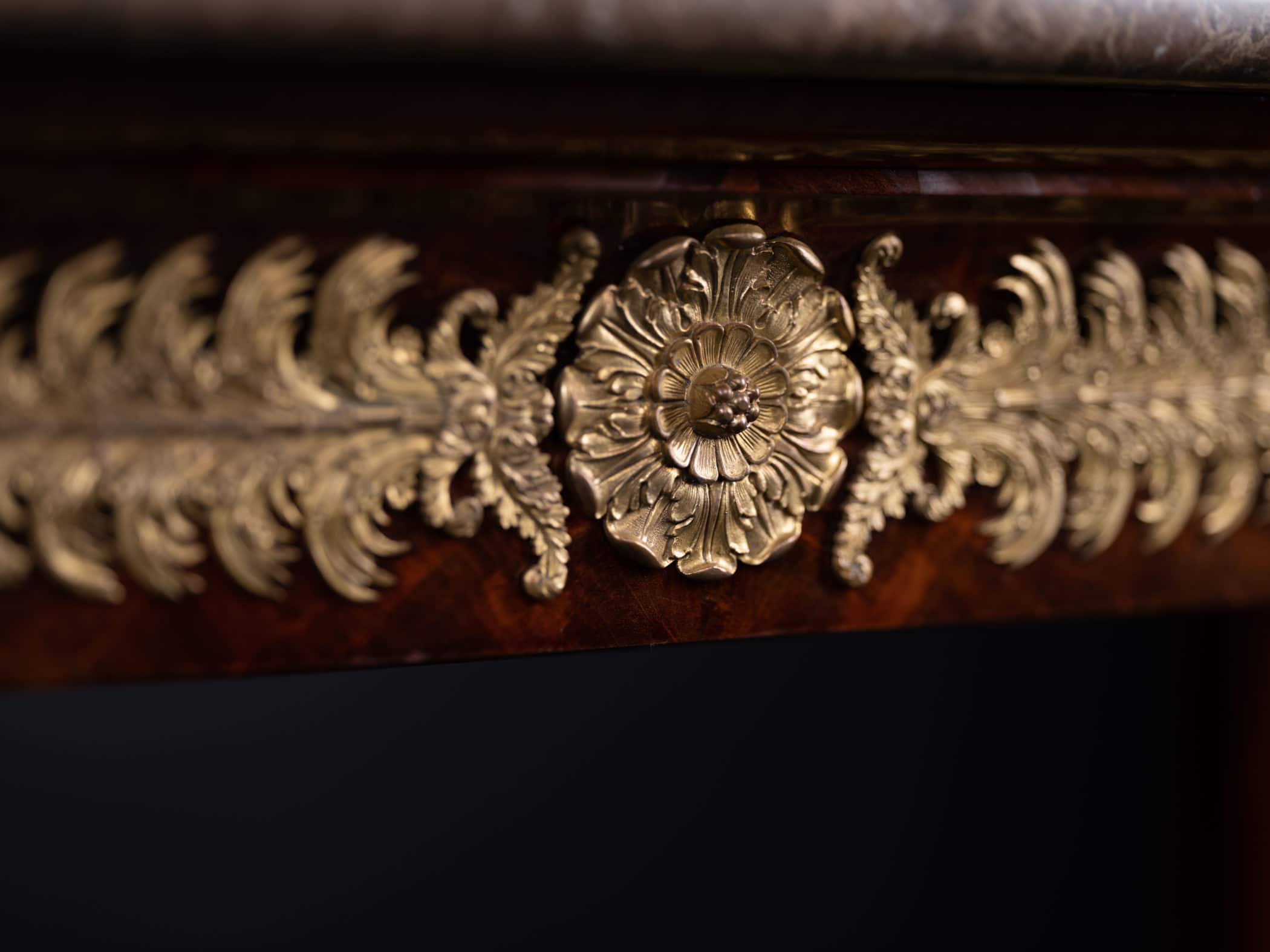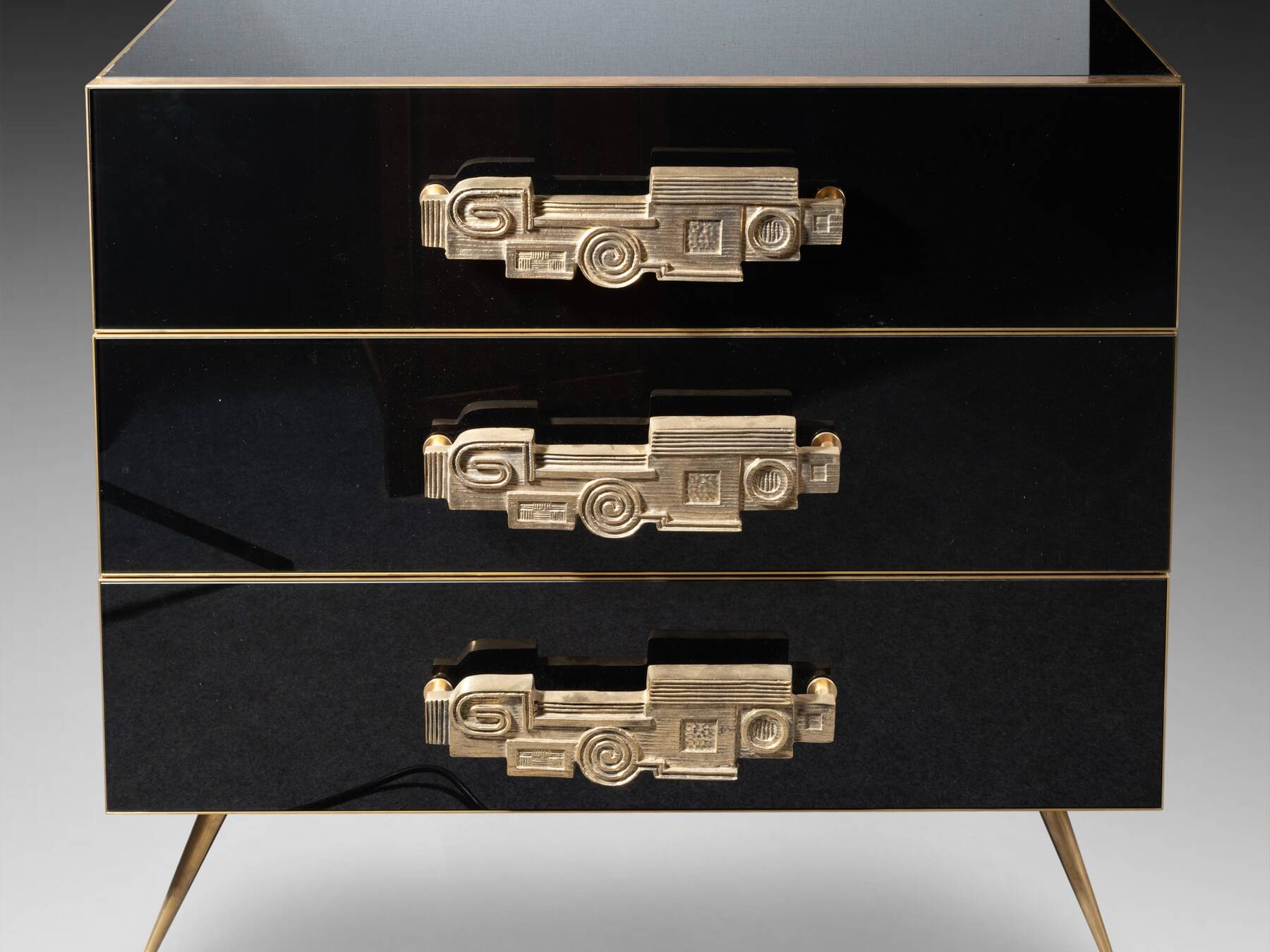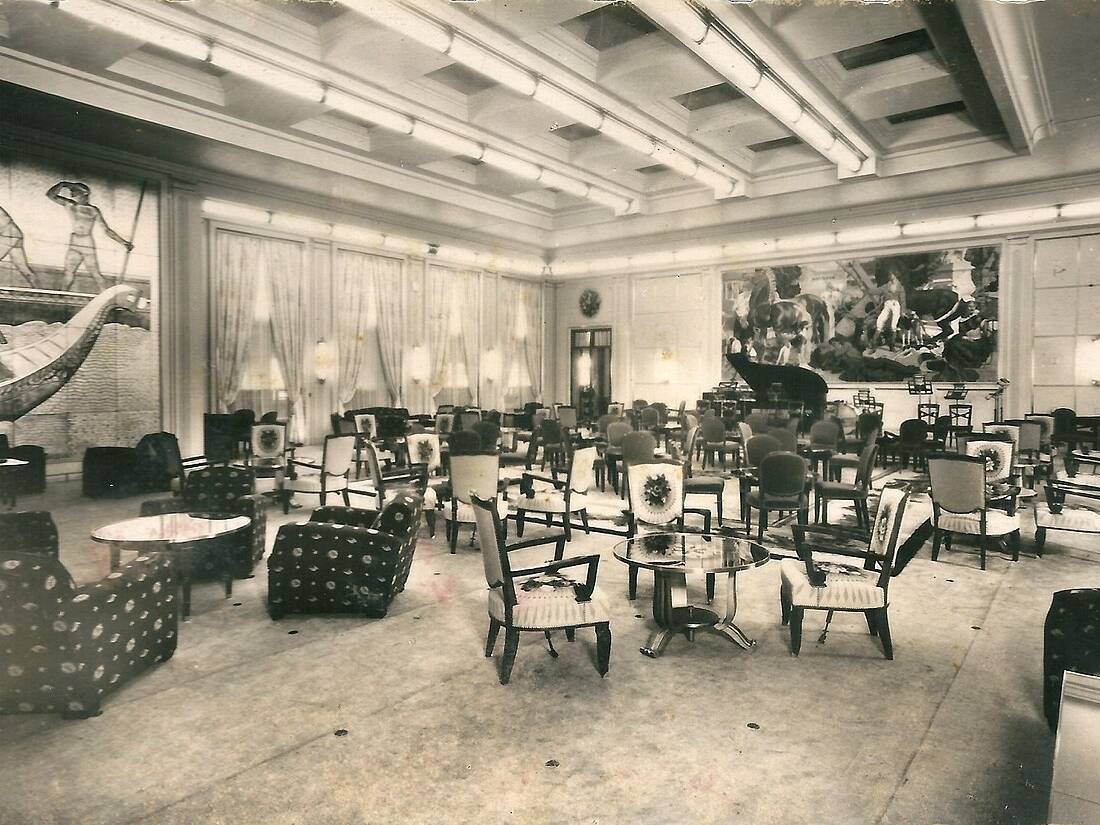Jacob-Desmalter (1770-1841): the cabinetmaker who awakened the Empire style
His father Georges Jacob was the originator of the Louis XVI style. As a worthy heir to his prestigious father, François-Honoré, son of Georges, explored other aesthetics and pushed his research towards a neoclassicism that today’s enlightened connoisseur recognizes as the Ariadne’s thread of the young 19th century. Everything then bears the moving memory of a fantasized antiquity. From clothing to furniture, from decorative to fine arts. The masterpieces of the painter Jacques-Louis David (1748 – 1825), with whom the cabinetmaker often worked, bear witness to this.
The success of the father undoubtedly favoured that of the son. Nevertheless, without talent, there is no fame and it took a lot of talent for our cabinetmaker to manage one of the most important furniture factories in Paris during the Empire, a factory that employed up to 300 people.
Our Jacob-Desmalter console is the epitome of Empire taste at its most elegant and luxurious.
Prestance and triumph of symmetry, preciousness of exotic wood, powerful but sober marble while the remarkably delicate bronzes do not indulge in ostentation. Everything evokes the restraint that befits nobility. The furniture wants its triumph modest in an opulence that nevertheless says the opposite.
Moreover, the console is undoubtedly the Empire furniture par excellence. There is no room without it. The chest of drawers reigned in the 17th and 18th centuries; at the turn of the 19th century, the console took its revenge and the lion’s share. Sober and simple, it can be discreet or take pride of place. But always, it corresponds to the idea that we have of an antique furniture often fantasized (the impetuous neoclassicism): simple, useful, straight and able to adorn itself with the trappings of luxury.
The Empire Style
The discoveries of Herculaneum and Pompeii in the eighteenth century had undoubtedly triggered this new taste for antiquity. But the Egyptian campaign (1798 – 1801) was a turning point and marked the advent of a style that would continue to inspire the greatest designers. Even today, it would be wrong to underestimate the immense influence of the Empire style; Art Deco is a direct heir.
While Egyptomania was in full swing in Paris and the provinces, the famous ornamentalists Percier and Fontaine published a collection of interior decorations in 1801 in which the promising signs of neoclassicism could be seen. It was so successful that a new edition was necessary in 1812.
In this book are compiled numerous engravings of motifs that spread this new taste borrowed from ancient motifs throughout France. The splendour of the Empire is therefore the model to follow, a model naturally carried by the elites. For if the Ancien Régime is no over, the Empire style is nothing more than the logical continuation of the Louis XVI style, a style that is mixed with the ancient imperial ideal to which Napoleon Bonaparte aspires.
So references to the Roman Empire are everywhere: bronze imitating antique cameos, laurel wreaths, immortal sphinxes, powerful lions, imperial eagles, graceful swans and Mediterranean palmettes are the ornament of prestige furniture as well as that of everyday life. The chromatic palette also adapts with a taste for purple and gold. What is closer to purple than the flamboyant mahogany though ?
Jacob-Desmalter and all the cabinetmakers of the Empire made mahogany the perfect wood for this new style. Especially as it blends beautifully with the gold of the bronzes and the sober marbles.
For the Empire forms, Jacques-Louis David drew lines inspired by the furniture discovered in Herculaneum and Pompeii and that which can be admired in the frescoes uncovered.
The effect is striking. The simple-looking forms are adorned with the most beautiful woods and the most finely chiselled bronzes. Luxurious furniture – such as that made by Jacob-Desmalter – exudes the authority of an ancient presence as well as the pomp that should envelop the figure of an emperor, whether foreign, French or from a distant antiquity.
It is remarkable in terms of form and technology that the strut also serves as a base – in the case of our console, but not only.
Note here that the lion’s claws that we usually expect to see on the legs of the furniture are here placed on the strut. This is a notable characteristic of the Empire style that is regularly found on prestigious furniture and in particular on those of Jacob-Desmalter. The strut is no longer just for the stability of the furniture, it becomes the pedestal of the furniture, its platform that imposes it in the room and highlights it.
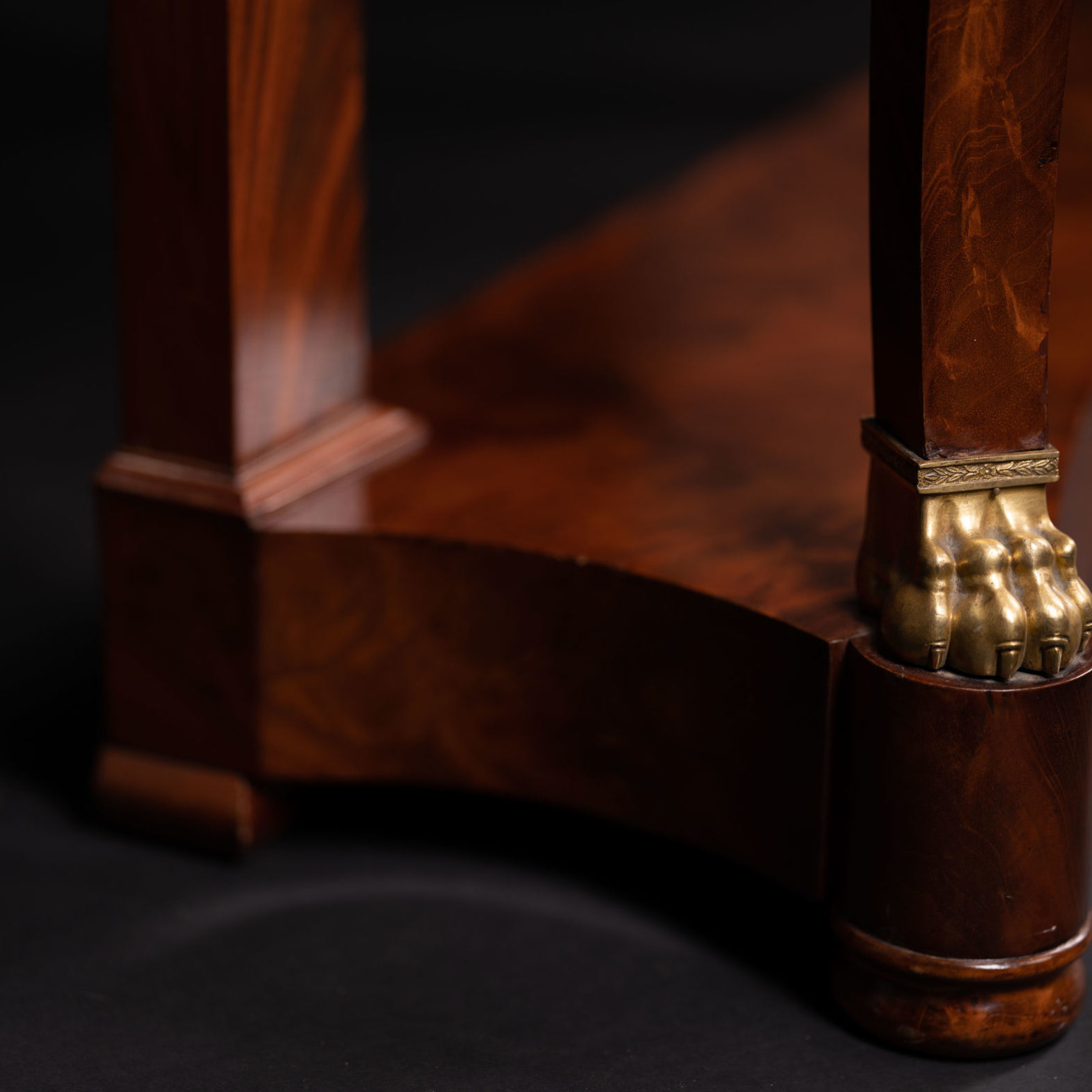
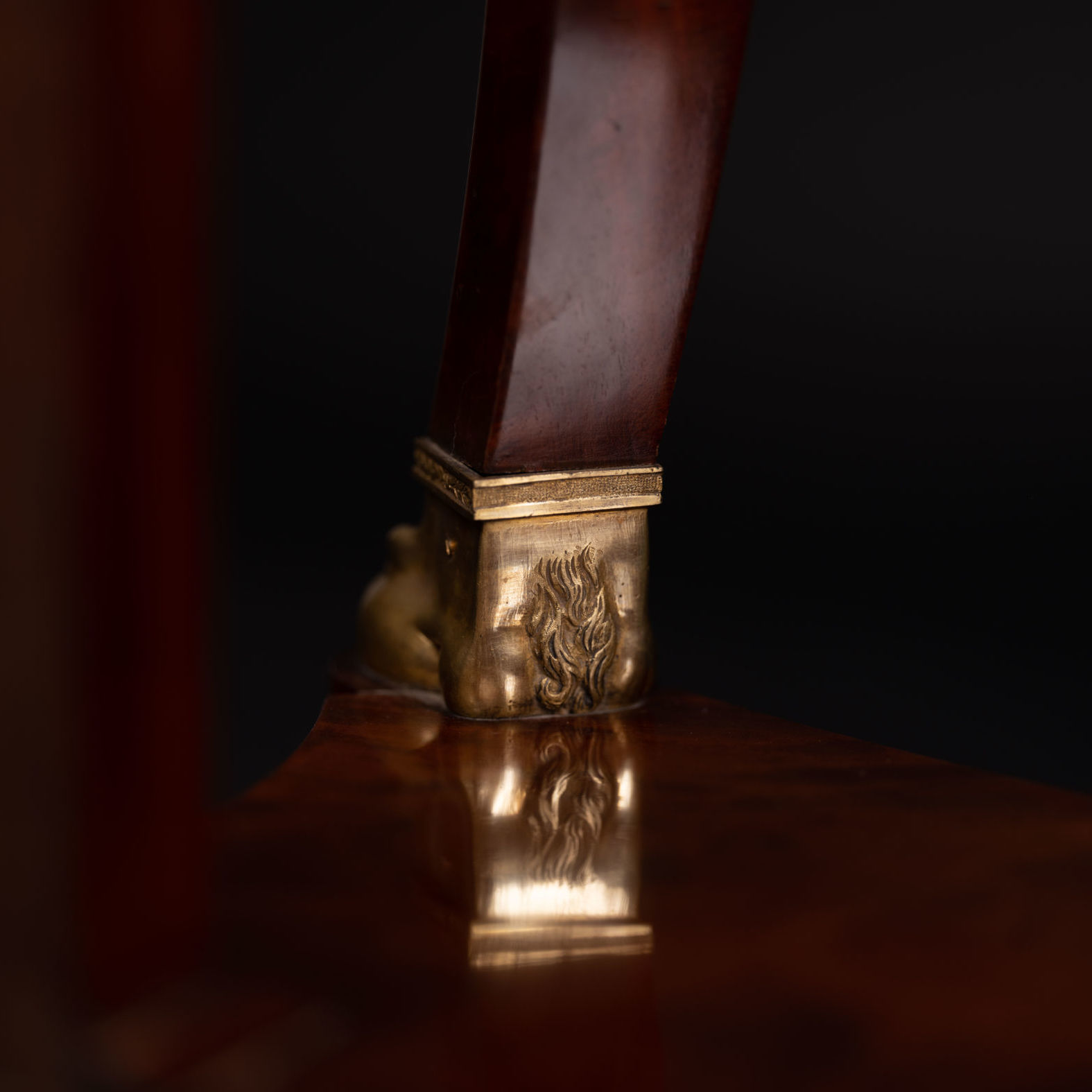
Jacob-Desmalter and Thomire: cabinetmaking and golsmithery in the service of the Emperor
Josephine de Beauharnais (1763 – 1814), the future empress, enlisted the services of the ornamentalists Percier and Fontaine, as well as the best craftsmen, as soon as she bought the Malmaison. Jacob-Desmalter was naturally put to work by the famous Creole, former Merveilleuse of the Directoire.
Pierre-Philippe Thomire became a sculptor and bronzemaker who supplied their imperial and royal Majesties from 1809 onwards and therefore did not serve Josephine, who divorced Bonaparte in 1804.
Thomire made, among other things, the vermeil cradle of the King of Rome and developed his activity so well that at the height of his career no less than 700 workers were employed by him.
Together with Jacob-Desmalter, he brought furniture ornamentation to its highest degree of art and refinement. As on our console, the bronzes designed, made and chiseled by Thomire are of an unprecedented delicacy, sometimes very close to the work of a lacemaker. The modelling of each piece is so well studied and prepared that it allows the gold leaf to be used without losing any of the fine details.
Once installed on Jacob-Desmalter’s mahogany furniture, Thomire’s bronzes give the furniture a discreet yet lavish sumptuousness, revealing the silkiness and warmth of the flamed mahogany while gracefully underlining the sobriety of the lines. The Empire style in a single piece of furniture, timeless and emblematic.
Marielle Brie
Art Historian for Art Market and Cultural Media
Author of the blog Objets d’Art et d’Histoire
Autres ressources et documentations
28 June 2025
Plaster Sculptures, Plaster Casts
For a long time, plaster casts suffered from a poor reputation. Often regarded as crude replicas, and sometimes even dismissed as inexpensive imitations, they nonetheless had…
17 April 2025
The Middle-Ages Furniture
Rare and highly sought-after, Middle-Ages furniture is making a strong comeback. An overview of this market, where enlisting the guidance of a professional is strongly advisable.
18 March 2025
Murano Glass Furniture
Since the beginning of the 20th century, Murano glassmakers have been exploring new horizons. After classic lighting and decorative art, Murano glass is now used to adorn…
16 December 2024
A bronze triton after the sculptures of François Girardon (1628 – 1715) in Versailles
This fountain element is all the more admirable as it is sculpted after the masterpieces of the Pyramid Basin, on the parterre of the North Wing of the Versailles gardens.
18 November 2024
Tyco Bookcase, by Manfredo Massironi, for Nikol International
A pure creation of optical art research in the 1960s, the Tyco library shelf designed by Manfredo Massironi invites the viewer to bring the work of art to life on a daily basis.
3 August 2024
The Ocean Liner Style
In the 20th century, the immense ocean liners connecting the Old Continent and the New World were ambassadors of tastes and innovations on both sides of the Atlantic.

